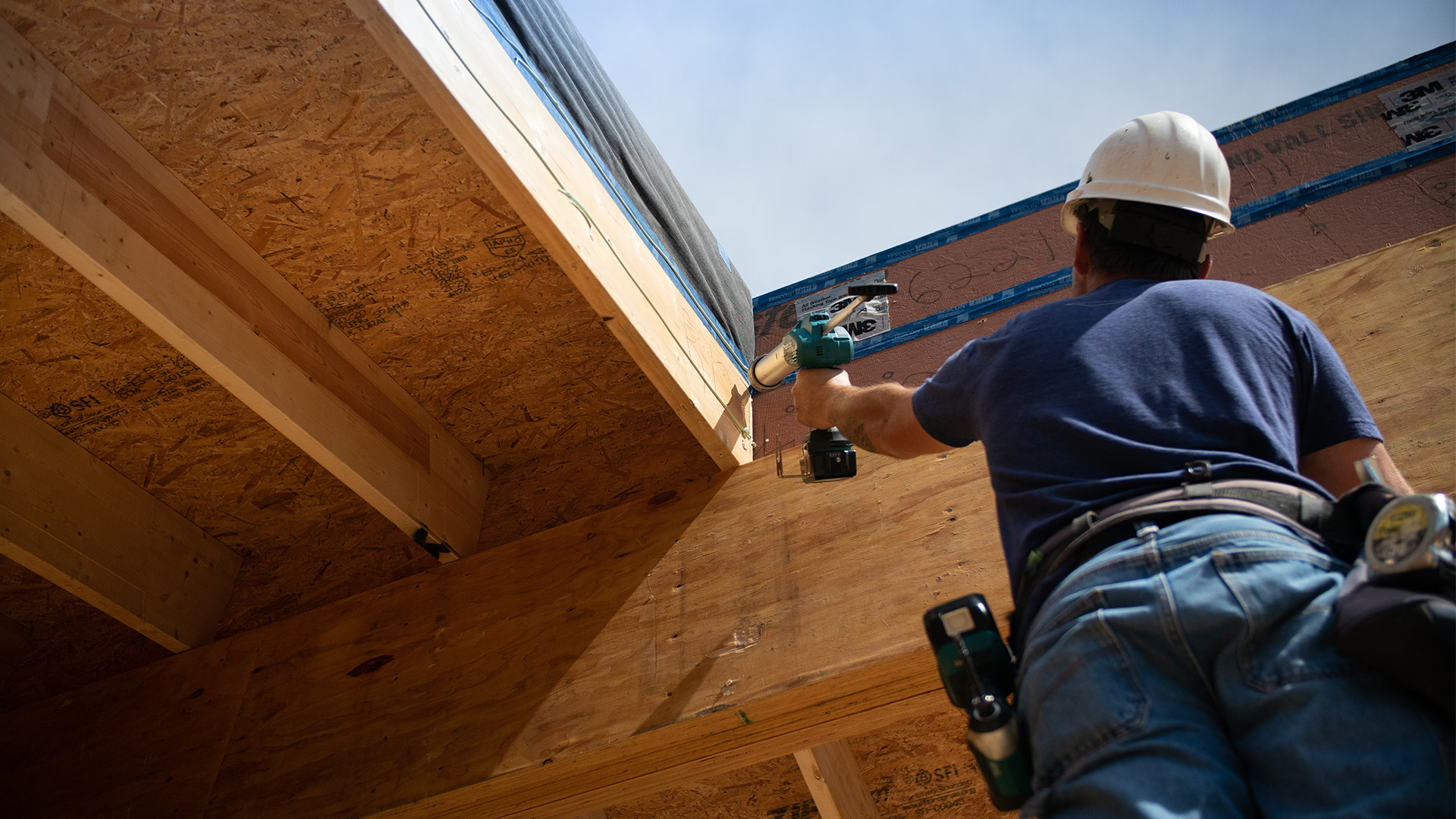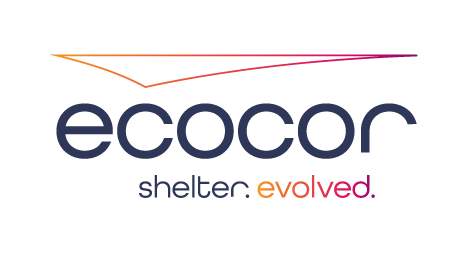
A New Approach To Building
Ecocor works at the intersection of proven building science and master craftsmanship, with a commitment to sustainability.
As building scientists, we verify our knowledge with data. We invest in machinery and people to improve our control over the building process. We perfect our designs to make our homes durable, and continuously hone our craftsmanship to make them beautiful. We choose high-performance materials that are sustainably produced, manufactured close by, and have low embodied energy. The result? Homes that are comfortable, durable, resilient, energy efficient, cost efficient, and healthy.
Durability
Control of heat, air, and moisture using the Ecocor Passiv Wall make our houses last. Science teaches us some important things about moisture, air, and heat: Air carries a surprising amount of water vapor through extremely small holes in the walls and floors and ceilings of a home. In the course of 24 hours, 12.7 oz. of vapor can accumulate in a wall through a 1mm x 1mm hole. As much as 28 oz. of vapor can be transported through the same hole at 20 Pascals of pressure.
So, to build a durable building, you need to regulate heat, air, and moisture in all its forms, and each needs to stay in its place. An Ecocor Passiv Wall has dedicated control layers to do exactly that. In the illustration to the left, you can see the dedicated layers that control air infiltration, heat flow, and vapor. The Weather-Resistant Barrier (WRB) is a Thermoplastic Elastomer Ether Ester (TEEE) fabric. It is completely waterproof and extremely robust and allows vapor to escape to the exterior. This fabric is meticulously flashed and taped so that liquid water has no entry point. Likewise, the airtight layer that controls the movement of air and moisture is carefully taped and sealed at every joint and penetration. There are no cracks through which air can move and carry water into wall cavities. Importantly, that airtight layer is located well inside the wall, where it is unlikely to be damaged by the activities of building and living in the house.
18 inches of continuous insulation is installed both in the factory and in the field creating a Thermal bridge free wall that keeps the heating and cooling inside the home and the elements on the outside. Because the wall is so well insulated, it is impossible for condensation to occur on the structural components of the walls and roof. This ensures the structure remains dry and durable for generations.


Wetting & Drying Mechanisms
We understand water in all of its forms, and we do everything possible to keep moisture out of our walls, roofs, and foundations. Moisture will, via vapor drive and dew point fluctuation, travel to places we don’t necessarily want it.
In an Ecocor Passive House that’s not a problem. We’ve anticipated it and designed Ecocor Passiv Wall panels to be Vapor Open.
What does that mean? It means that, like a GoreTex™ jacket, a Passiv Wall will keep liquid water out, but let water vapor pass through. So whatever moisture does end up inside the wall cavity can escape without doing any damage.
The drying potential of our Passiv Wall always exceeds its wetting potential. To prove it, we’ve placed sensors in the walls of some of our homes to measure moisture levels, and have years of data showing that while moisture levels fluctuate, they always stay within their design parameters. That is, perhaps, the best indication that an Ecocor Passive house will stand the test of time.
The 21st century keys to building longevity and energy efficiency are airtightness and vapor permeability. All three of the control layers in a Passiv Wall restrict air flow, but are vapor-open, ensuring durability and lasting comfort.
Resilience
A home built to Passive House will stay above freezing for a very long time with no heat input at all. If people are living there, the heat generated by the basic activities of living like cooking, cleaning, blowdrying your hair, and other day to day activities, will maintain a Passive House at a safe temperature in most of the United States. Add a few solar panels, and your home can be not just safe, but comfortable, in the most unpleasant weather, even if the power grid is down for days.
That’s what we mean when we say our houses are resilient. They’ll keep you and your family cozy no matter what mother nature throws at them.


Energy Efficiency
Compared to conventional construction, building to the Passive House Standard reduces the energy demand for heating and cooling by as much as 90%, cutting carbon emissions significantly and providing a direct effect on the environment we all share. Ecocor homes go a step further; we feature some of the lowest embodied energy of any buildings in the US.
We source most of our materials nearby to minimize the fixed cost of energy needed to deliver the materials. We love natural wood and use it where appropriate, but we mix in engineered materials when they serve a specific function. Most of these items are produced within a few hundred miles of our shop. When we do purchase materials from farther away, it’s because there is nothing currently manufactured nearby that can perform these important functions as well.
Cost Efficiency
Saving energy means saving money. Energy-efficient design and high-quality construction reduce the monthly heating and cooling costs of an Ecocor Passive House by 80% to 90%, compared to standard code construction. That means more money in your pocket every month for as long as you live in your home.
Further, lower energy usage provides protection from price shocks when energy costs rise in the future, making your Ecocor house even more affordable over the long term. In fact, while industry estimates find that the initial cost for construction of Passive Homes can be up to 10% more expensive than typical construction. That is an investment in the parts of your house that will not only save you money every month, but will also last the longest. Those energy savings will easily exceed the monthly payments for the additional cost of building a Passive House! The energy that you save starts to pay you back the day you move in and continues to pay dividends long after your Ecocor home is paid for.






